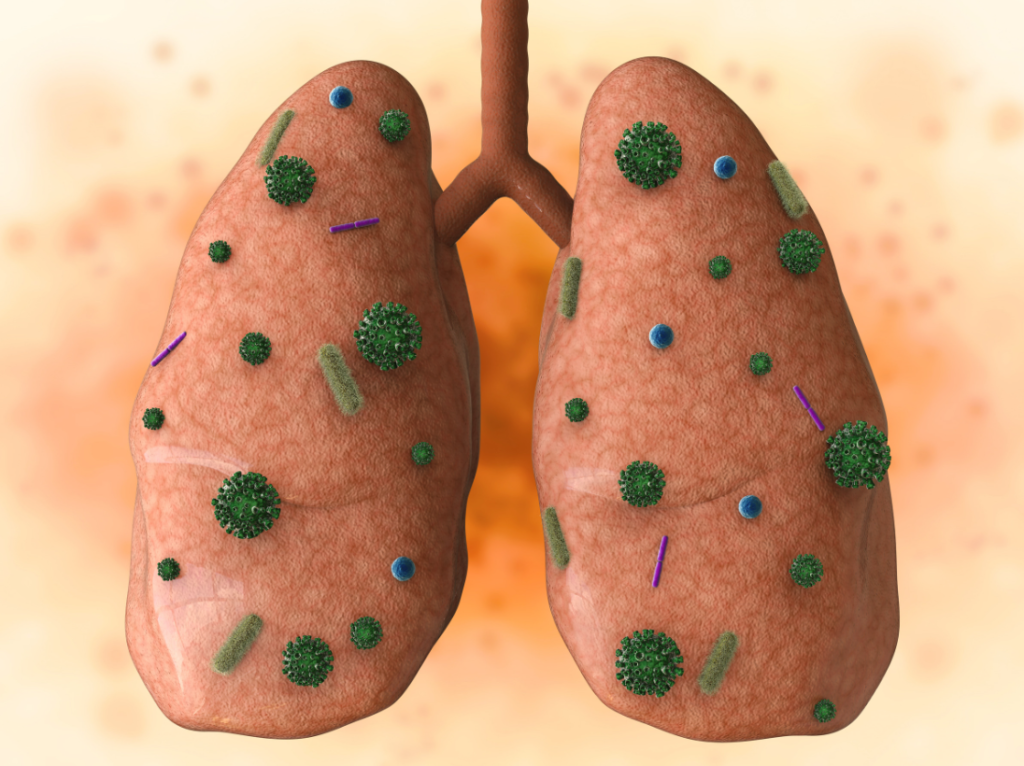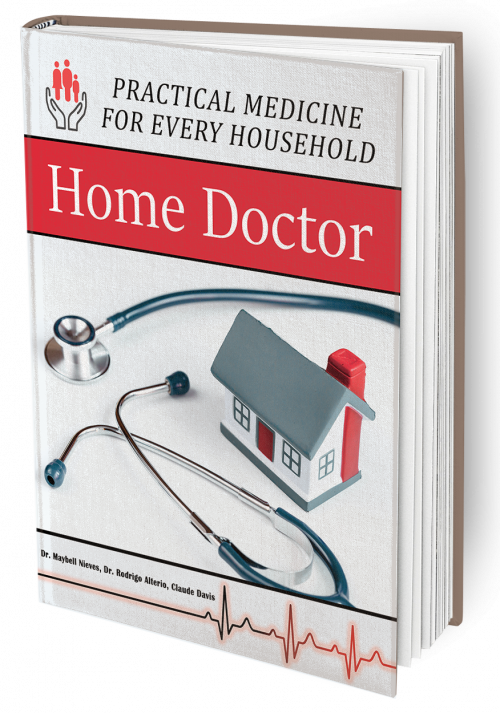Our lungs are the workhorses of our respiratory system, constantly filtering air and delivering life-giving oxygen to our bloodstream. But sometimes, these vital organs can become infected, leading to a range of uncomfortable and potentially serious health issues. This comprehensive guide delves into the world of lung infection, exploring its causes, symptoms, diagnosis, treatment options, and even the surprising link between home renovations and lung health.

What is a lung infection?
A lung infection, also known as a lower respiratory tract infection (LRTI), occurs when germs like bacteria, viruses, or fungi invade the lungs. This invasion triggers the body’s immune system to fight back, leading to inflammation and a variety of symptoms. Depending on the specific area of the lung affected, lung infections can be categorized:
- Bronchitis: This infection inflames the bronchial tubes, the larger airways that carry air to the lungs.
- Bronchiolitis: This condition primarily affects infants and young children, causing inflammation in the smaller airways (bronchioles) deep within the lungs.
- Pneumonia: This serious infection inflames the air sacs (alveoli) of the lungs, filling them with fluid or pus, making breathing difficult.
- Pleuritis: This inflammation affects the pleura, the thin membrane lining the lungs and chest wall.
Unmasking the Culprits: Causes of Lung Infection

A wide range of microorganisms can cause lung infections. Here’s a breakdown of the main culprits:
- Bacteria: Streptococcus pneumoniae, Haemophilus influenzae, and Mycoplasma pneumoniae are some common bacterial culprits, often causing bronchitis and pneumonia.
- Viruses: The respiratory syncytial virus (RSV), rhinoviruses (responsible for the common cold), and influenza viruses are frequent invaders, leading to bronchitis and bronchiolitis.
- Fungi: Aspergillus and Pneumocystis jirovecii are fungal organisms that can cause lung infections, especially in individuals with weakened immune systems.
Also Read: Navigating Gender-Specific Health Advice: What Women and Men Need to Know
Beyond the Cough: Symptoms of a Lung Infection
Lung infections manifest through a variety of symptoms, varying in severity depending on the type and severity of the infection. Common signs include:
- Cough: This is a hallmark symptom, ranging from a dry cough to one producing mucus (phlegm).
- Fever: A rise in body temperature is a common reaction to the body fighting infection.
- Shortness of Breath: Difficulty breathing, especially during activity, is a significant symptom.
- Chest Pain: A sharp or burning pain in the chest, often worsened by coughing or taking a deep breath.
- Wheezing: A whistling sound during breathing can indicate airway narrowing caused by inflammation.
- Fatigue: Feeling tired and lacking energy is a common symptom of lung infections.
- Muscle Aches: General aches and pains can accompany a lung infection.
- Headache: Headaches can sometimes occur alongside other symptoms.
Shining a Light: Diagnosing Lung Infection
Diagnosing a lung infection often involves a combination of techniques employed by your healthcare provider:
- Medical History: Discussing your symptoms, risk factors, and any recent illnesses is crucial.
- Physical Examination: The doctor may listen to your chest for abnormal breathing sounds.
- Chest X-ray: An X-ray can reveal signs of pneumonia and other lung abnormalities.
- Sputum Test: Coughing up mucus (sputum) can be analyzed to identify the causative organism.
- Blood Tests: These tests can check for markers of inflammation or infection.
- Pulse Oximetry: This test measures your blood oxygen saturation to determine how well your lungs are transferring oxygen.
- CT Scan: In some cases, a CT scan may provide further detail about the location and extent of the infection.

Combating the Threat: Treatment for Lung Infection
The treatment approach for a lung infection depends on the type of infection and its severity. Here’s an overview of common treatment options:

- Antibiotics: These medications are effective against bacterial infections and are typically prescribed in pill or liquid form.
- Antivirals: Certain viral infections benefit from antiviral medications to shorten the illness duration.
- Bronchodilators: Inhalers containing bronchodilators can relax airways, relieving wheezing and shortness of breath.
- Cough Suppressants: Over-the-counter cough suppressants can help manage a persistent cough but should be used judiciously.
- Expectorants: These medications loosen mucus and make it easier to cough up, promoting drainage from the airways.
- Rest and Hydration: Getting plenty of rest and staying well-hydrated are crucial for recovery.
- Over-the-Counter Pain Medication: Medications like acetaminophen or ibuprofen can help manage fever and body aches.
Also Read: The Power of Vitamin L-Carnitine: A Comprehensive Overview
Prevention: Keeping Your Lungs Healthy
While some lung infections are unavoidable, there are steps you can take to reduce your risk:
- Get Vaccinated: Vaccinations against influenza and pneumonia are highly effective in preventing these infections.
- Practice Good Hygiene: Wash your hands frequently, especially during flu season, and avoid close contact with people who are sick.
- Maintain a Healthy Lifestyle: Eating a balanced diet, exercising regularly, and getting enough sleep can boost your immune system and help ward off infections.
- Avoid Smoking: Smoking damages the lungs and makes them more susceptible to infection.
- Limit Exposure to Air Pollution: Air pollution can irritate the lungs and increase the risk of infection.
- Be Mindful During Home Renovations: Dust and mold released during renovations can irritate the lungs and trigger infections. Wear a mask and ensure proper ventilation during such activities.
The Surprising Link: Home Renovations and Lung Health
Home renovations can pose a hidden threat to lung health. Dust, mold, and other airborne particles released during construction or demolition can irritate the lungs and increase the risk of infection. It’s essential to take precautions during renovations, such as wearing a mask, ensuring proper ventilation, and cleaning up thoroughly afterward.
Conclusion
Lung infections are a common health concern with varying causes and symptoms. Understanding the different types of infections, their causes, and how they are treated is crucial for maintaining good lung health. By following preventive measures, such as getting vaccinated, practising good hygiene, and being mindful during home renovations, you can reduce your risk of developing a lung infection and keep your lungs healthy. If you experience any symptoms of a lung infection, consult your healthcare provider promptly for diagnosis and appropriate treatment.
Also Read: Respiratory Protective Equipment (RPE) Guideline
